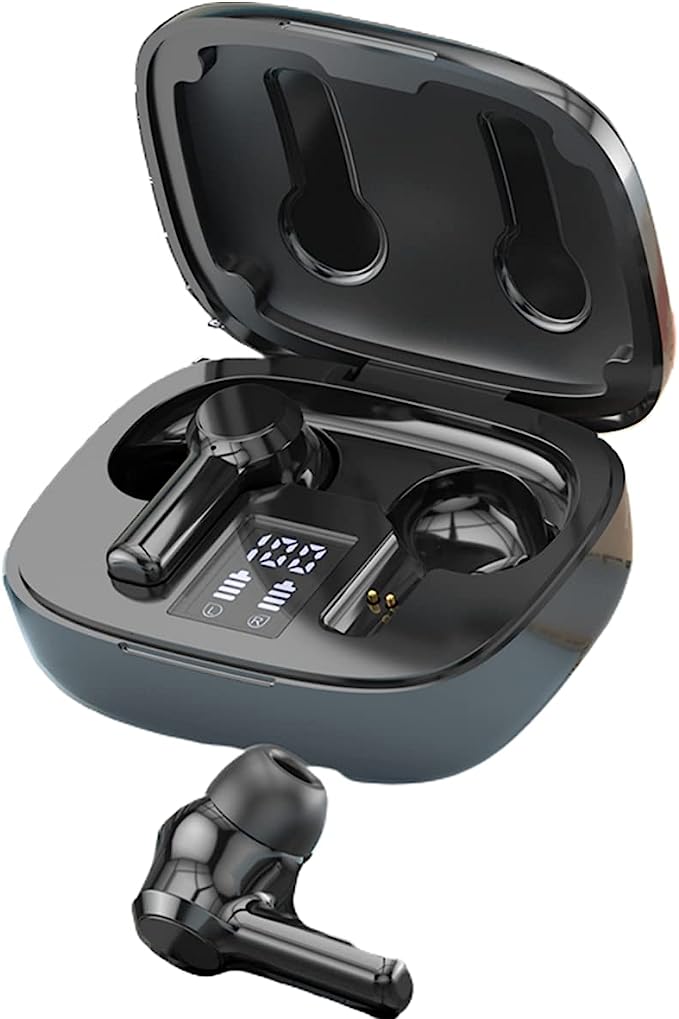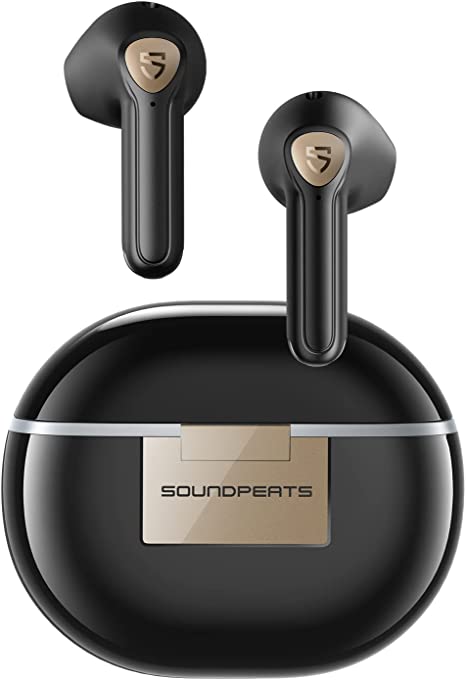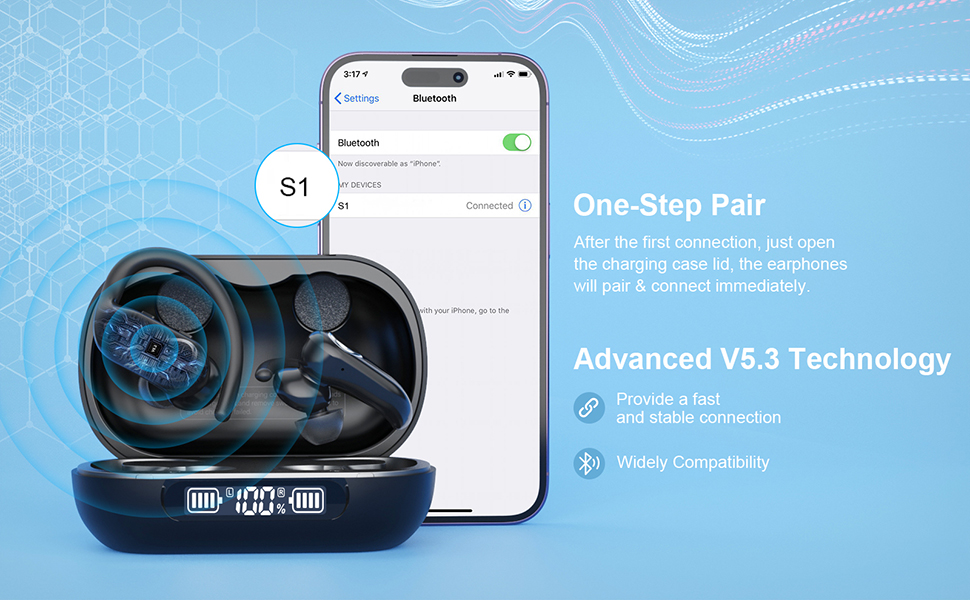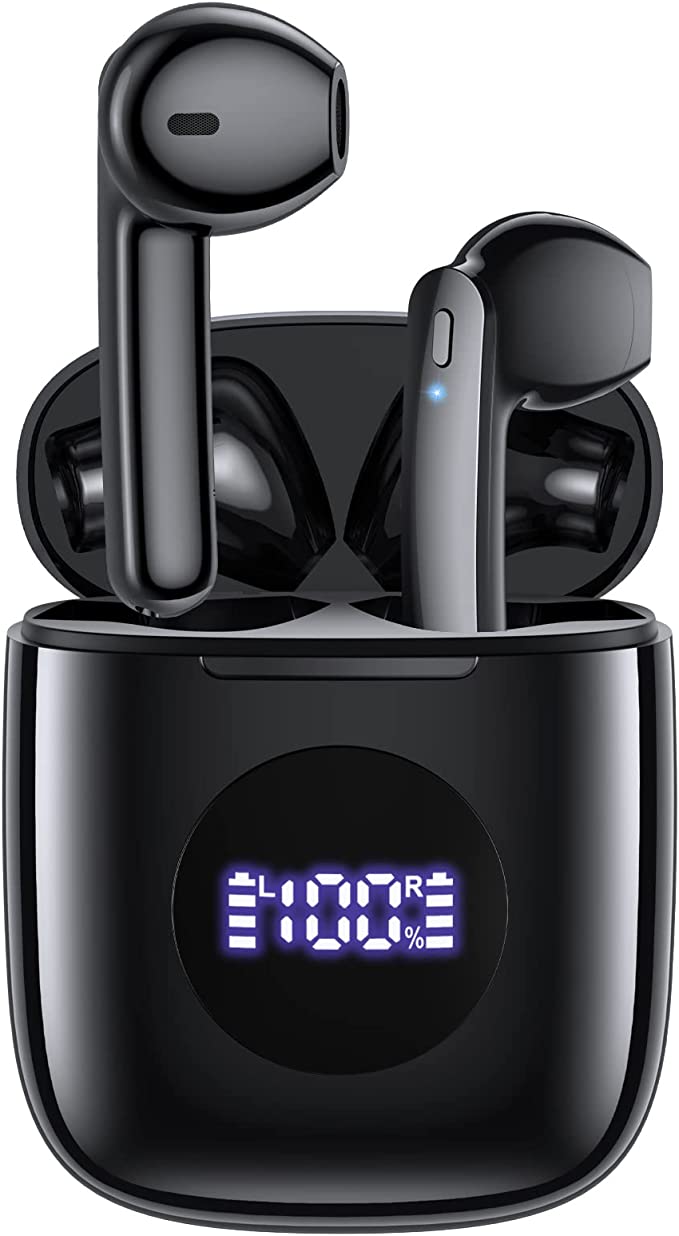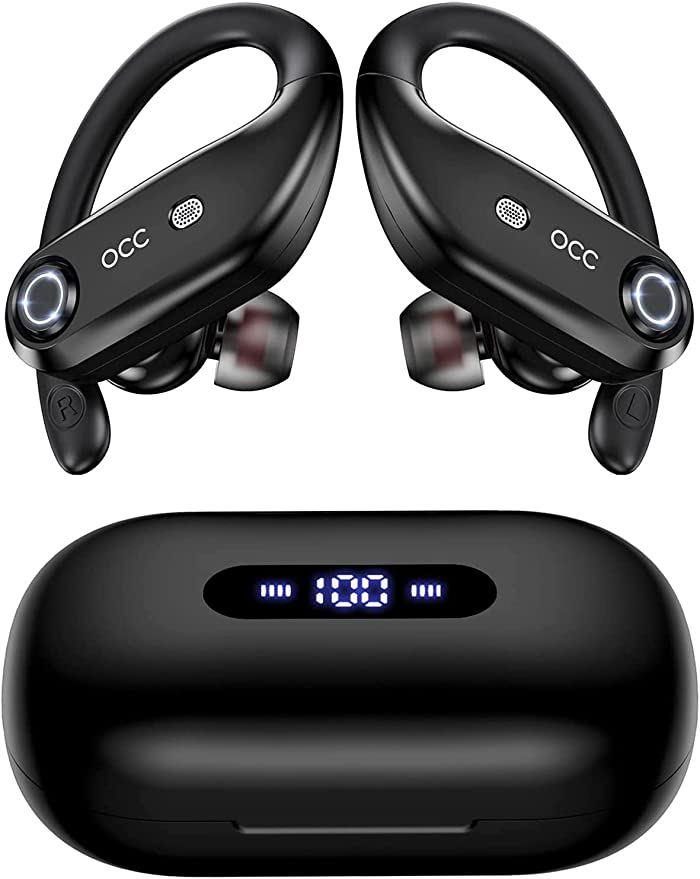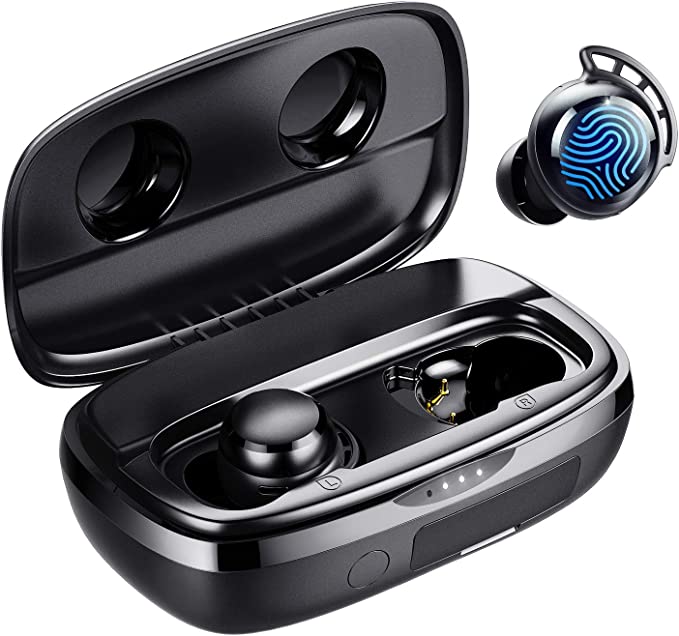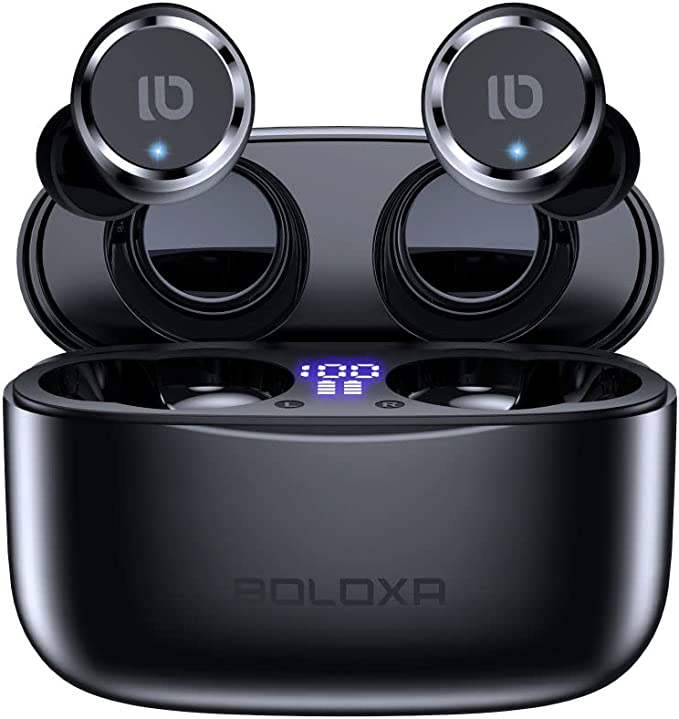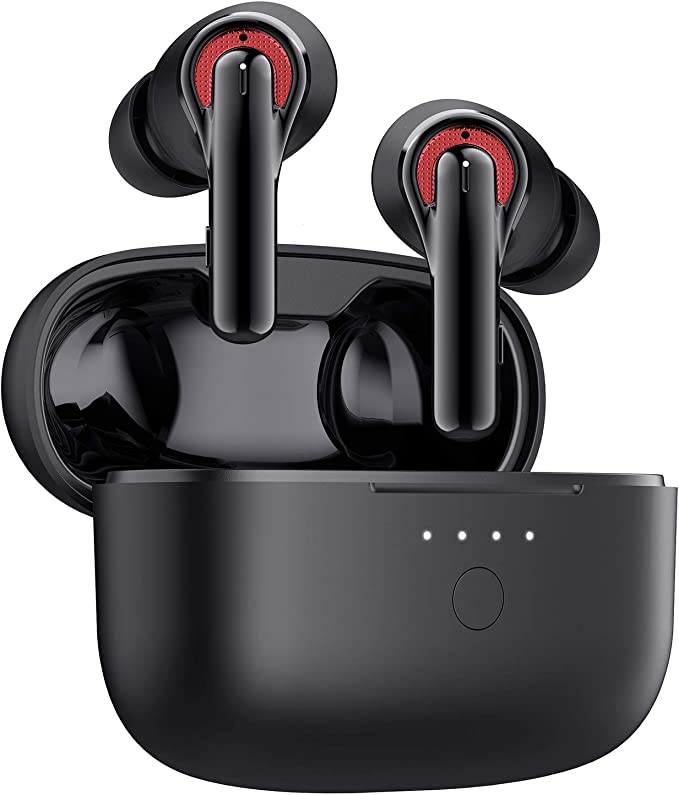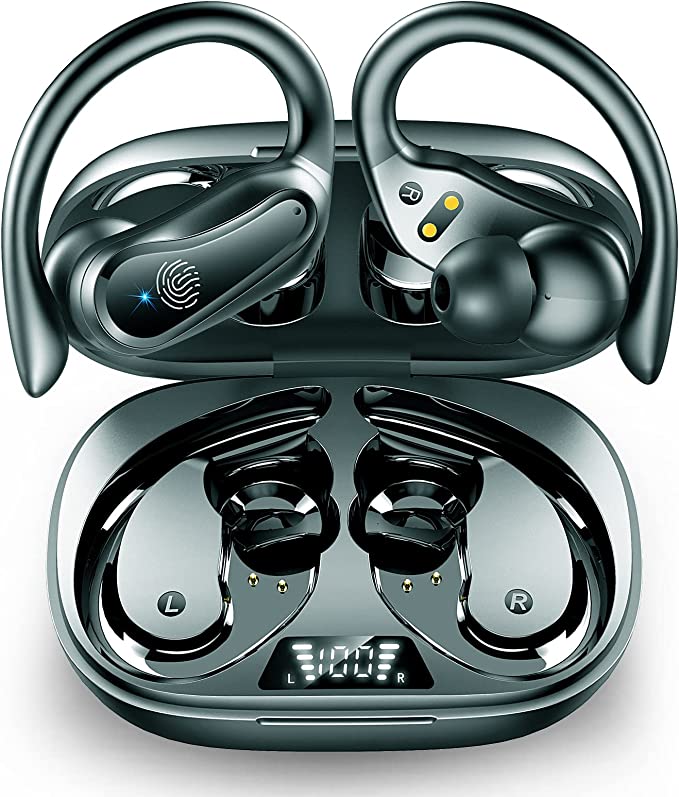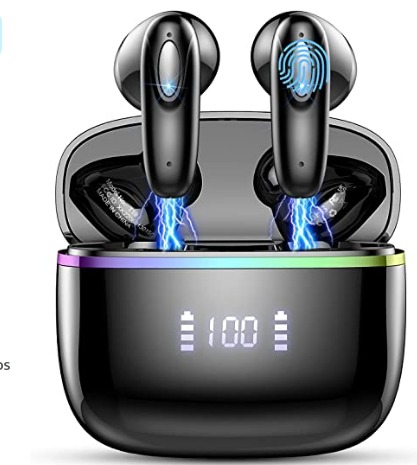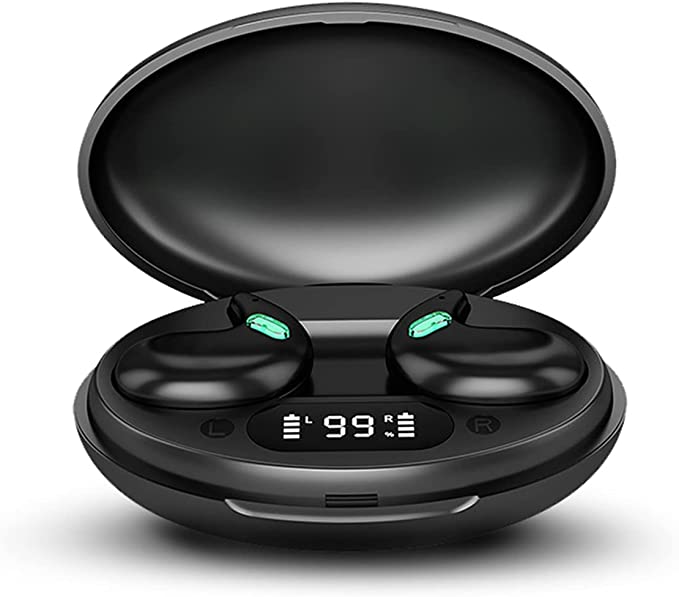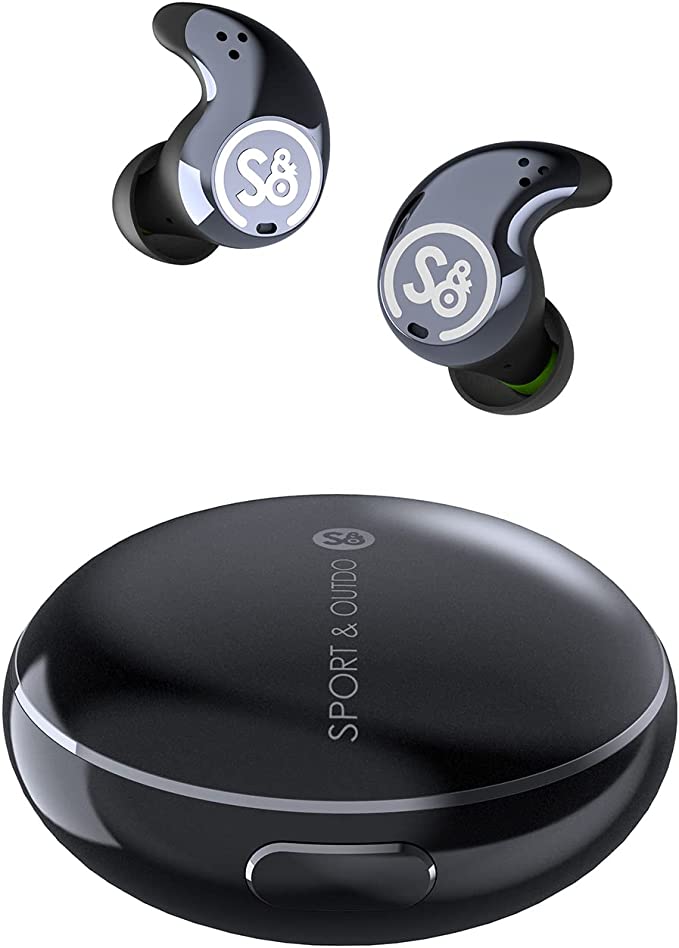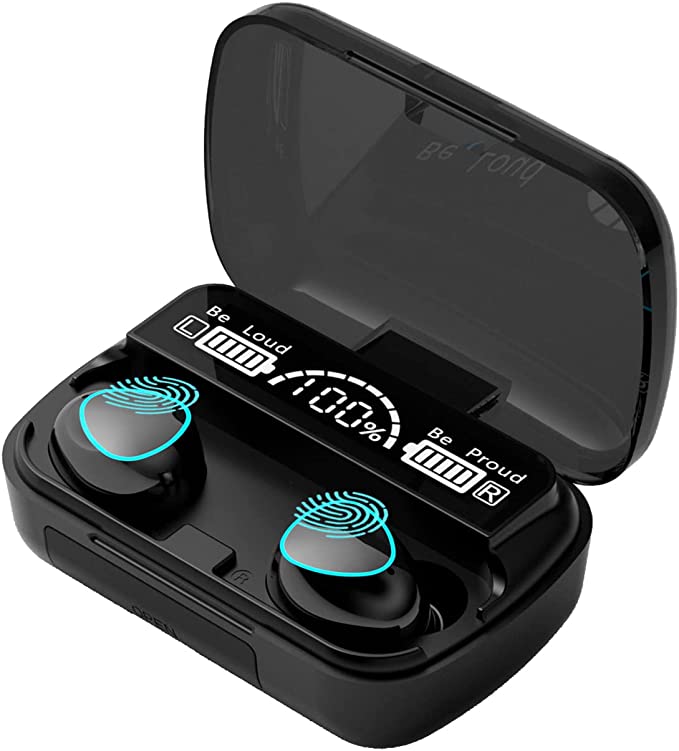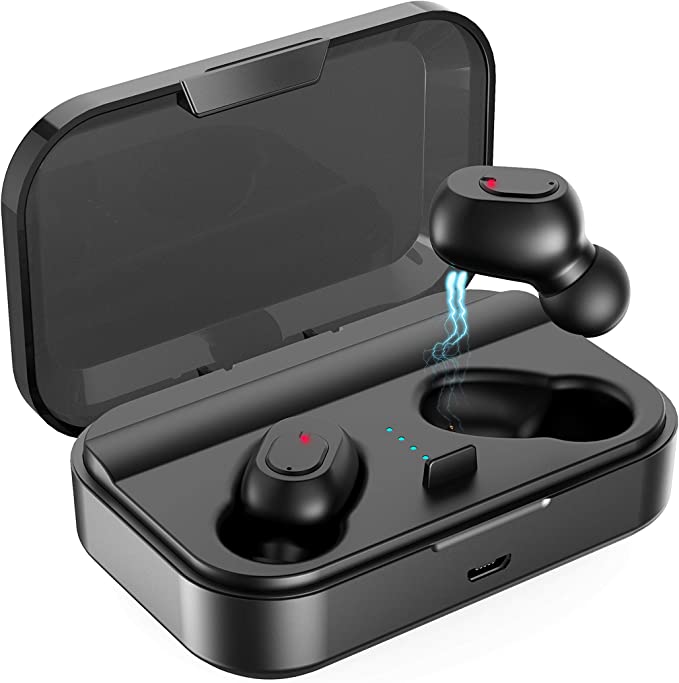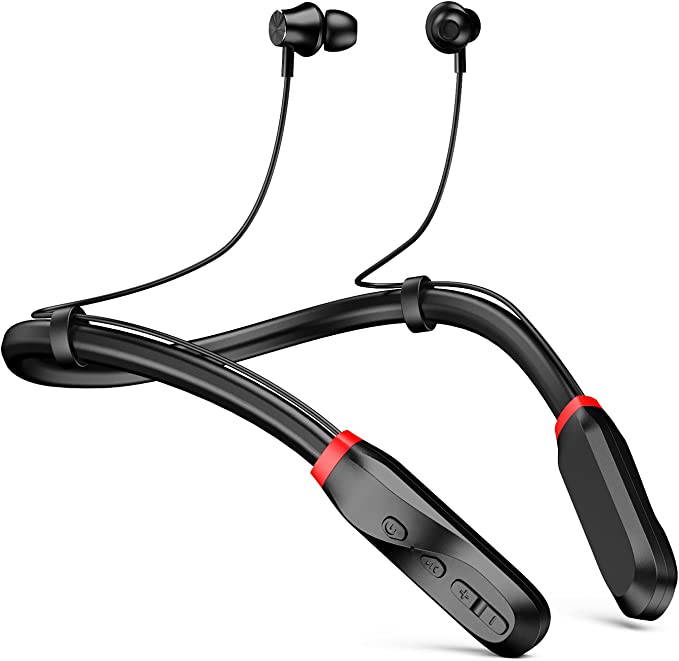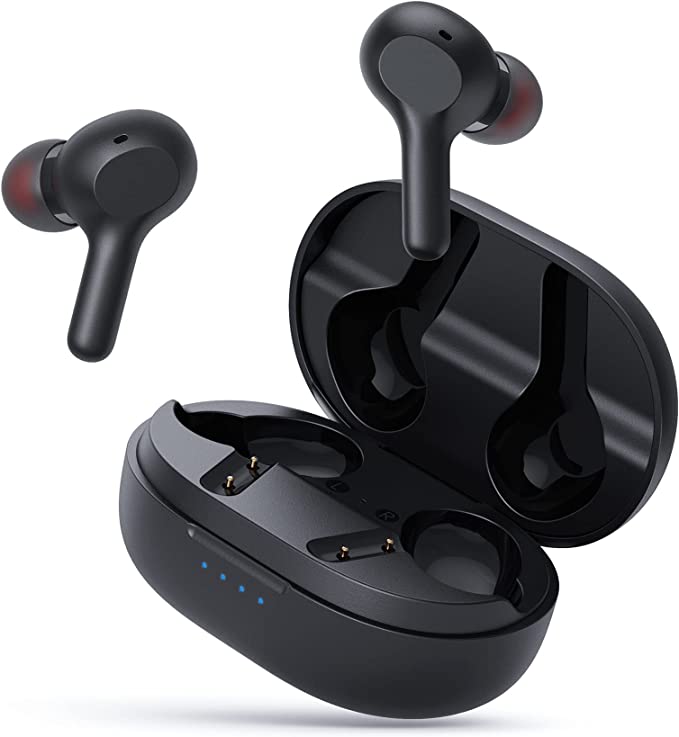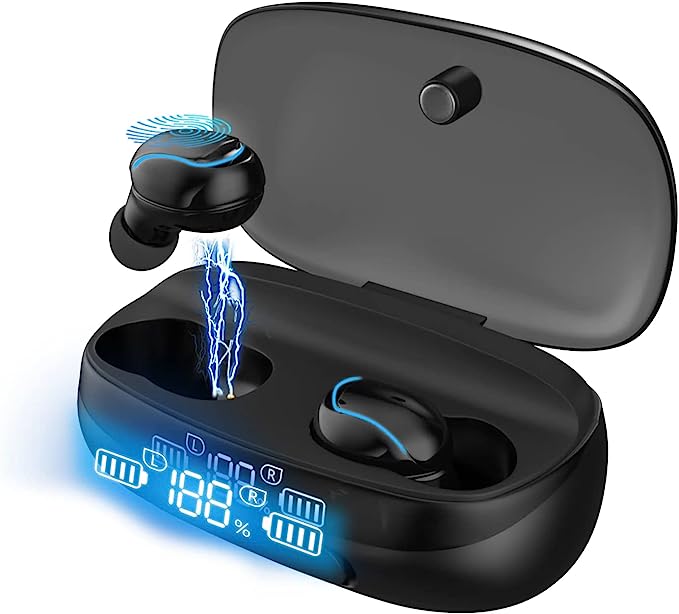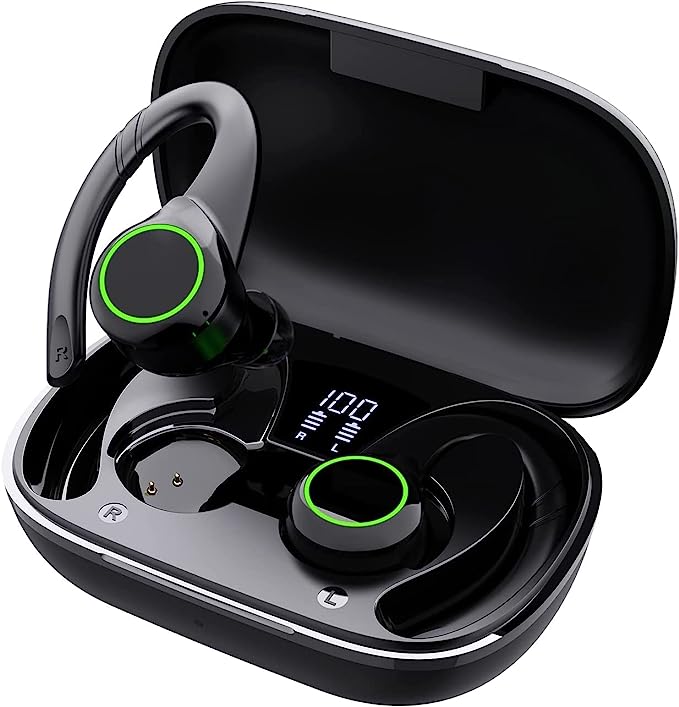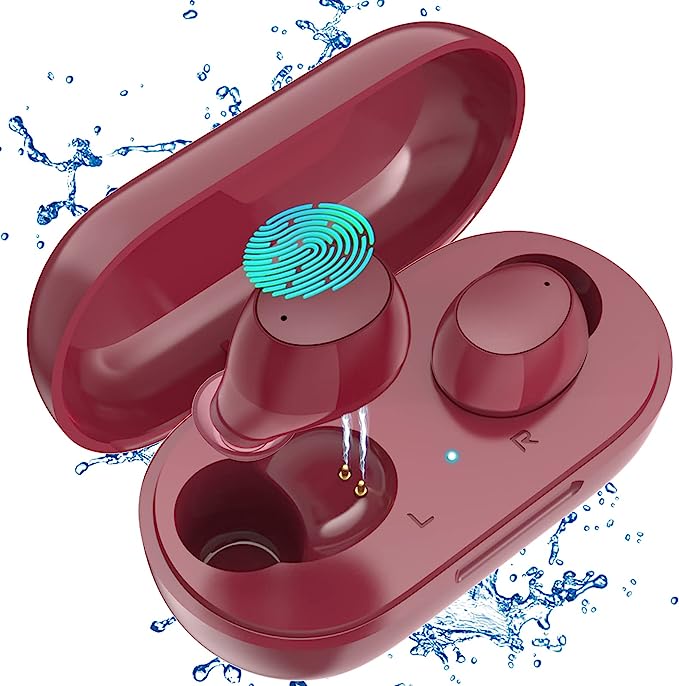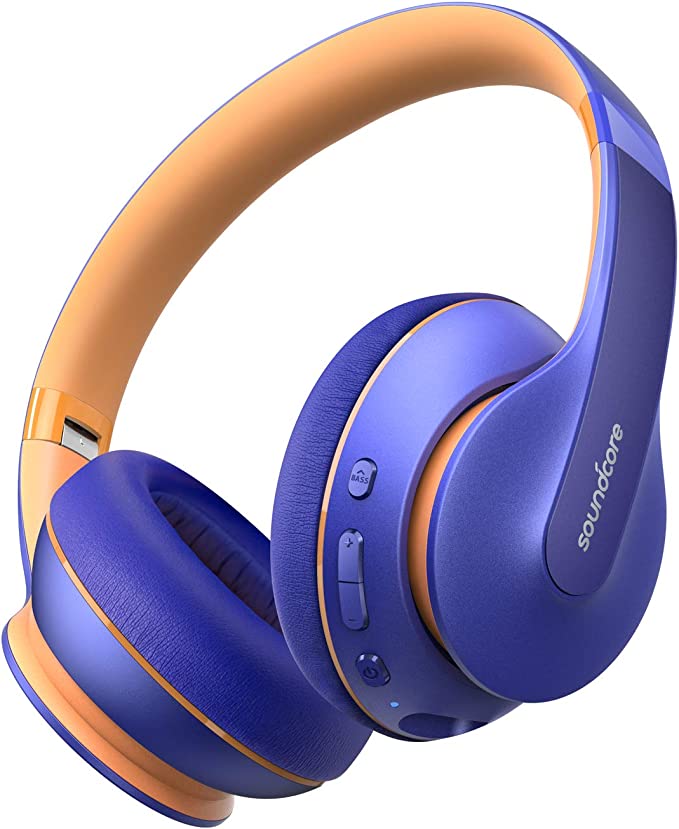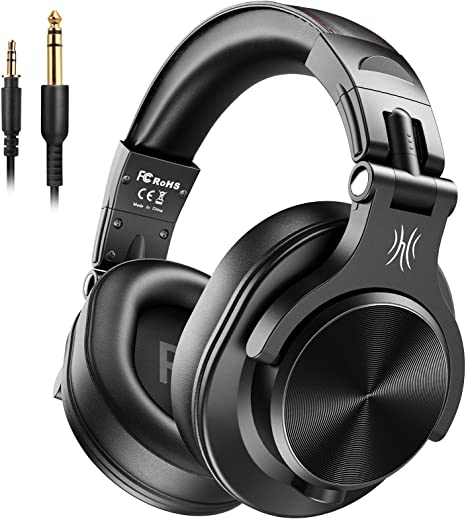Yardstick SKY50909 Earbuds: Understanding Bluetooth 5.2, DSP Audio & All-Day Battery Life
Update on April 13, 2025, 12:48 p.m.
Isn’t there something almost magical about popping a pair of tiny wireless earbuds into your ears and instantly being enveloped in your favorite music, podcast, or an important call, completely untethered from your device? This freedom, once a novelty, is now commonplace. We rely on these miniature marvels daily, yet often, their inner workings remain a mystery. How do they stay connected? How is the sound shaped? And how on earth do they last so long on a single charge?
Today, let’s pull back the curtain. We’ll use the Yardstick SKY50909 Wireless Earbuds as our case study – not to review them in the traditional sense, but to explore the fascinating technologies packed inside. Think of this as a friendly exploration, deciphering the jargon and understanding the science that makes these everyday gadgets possible. Our goal? To appreciate the intricate engineering humming away quietly in our ears.

The Invisible Handshake: Bluetooth 5.2 Keeping You Connected
The very foundation of any wireless earbud experience is the connection itself. The SKY50909 utilizes Bluetooth 5.2, one of the more recent iterations of the ubiquitous wireless standard. Imagine Bluetooth as a universal language, a sophisticated protocol allowing devices like your phone and earbuds to constantly talk to each other over short distances without messy cables.
So, what does the “5.2” signify? Each new Bluetooth version aims to improve this wireless conversation. Compared to its predecessors like Bluetooth 5.0 or 4.2, Bluetooth 5.2 (based on general specifications from the Bluetooth SIG, the governing body) is designed with several key advancements in mind:
- Enhanced Stability: It incorporates features intended to make the connection more robust, especially in environments crowded with other wireless signals (like busy offices or city streets). The goal is fewer frustrating dropouts or stutters in your audio.
- Connection Speed Potential: While instantaneous connection isn’t guaranteed, BT 5.2 includes mechanisms aimed at establishing that initial handshake between devices more quickly. This contributes to features like the “One-Step Pairing” mentioned for the SKY50909 – after the first setup, the earbuds should ideally recognize and connect to your phone almost as soon as you take them out of the case.
- Efficiency Foundations: Bluetooth 5.2 lays more groundwork for Bluetooth Low Energy (LE) Audio, a significant evolution focused on power efficiency and new audio capabilities. While this product doesn’t explicitly claim LE Audio features, using a 5.2 chip suggests it could potentially benefit from some underlying power-saving optimizations compared to much older versions.
The SKY50909 description also mentions “Intelligent Switching” between call, audio, and game modes. This is likely a software feature built on top of the Bluetooth connection. It probably works by detecting the type of audio stream or application running on your phone (e.g., recognizing a phone call is active or a game is launched) and subtly adjusting the earbud’s settings or audio processing for the best experience in that context.
It’s important to remember, however, that the real-world Bluetooth experience isn’t just about the version number. Factors like the distance between your earbuds and phone, physical obstructions (walls, your own body!), and interference from other 2.4GHz devices (like Wi-Fi routers or even microwave ovens) can all impact connection stability and range. User experiences with range can vary significantly based on these environmental factors and the antenna design in both the earbuds and the source device.

Sculpting Your Soundscape: The Art and Science of DSP
Okay, the connection is solid. Now, what about the sound itself? The SKY50909 promises “HiFi Stereo Sound” and “Deep Bass,” enhanced by “DSP enhanced sound effect technology.” Let’s unpack that “DSP.”
DSP stands for Digital Signal Processing. Think of it as a tiny, incredibly fast, and highly specialized computer chip inside each earbud acting like a miniature sound engineer. Its job is to take the raw digital audio data arriving via Bluetooth and manipulate it before it gets converted into the analog sound waves your ears actually hear.
Why do this? Raw audio from a tiny earbud driver might sound rather plain or lack punch. DSP allows manufacturers to digitally sculpt the sound. It’s like having a sophisticated equalizer and other audio tools working constantly:
- Tuning the Frequencies: DSP can boost certain frequency ranges and cut others. Want “Deep Bass”? The DSP can be programmed to amplify the low-end frequencies. Aiming for clear vocals in a podcast? It can subtly boost the mid-range frequencies where human voices primarily sit. This digital tuning is how earbuds try to achieve specific sound signatures, moving beyond the physical limitations of their small components. The term “HiFi” (High Fidelity) traditionally implies accuracy and low distortion, but in consumer audio marketing, it often signals an intention towards a pleasing, clear sound, heavily reliant on DSP tuning.
- Managing Dynamics: DSP can also manage the volume differences within the audio (dynamic range compression), making quieter parts slightly louder and preventing loud parts from becoming overwhelming or distorted.
- Enhancing Clarity & Perceived Space: Algorithms can analyze the sound to enhance details, potentially creating a wider or more “immersive” stereo image than the raw signal might provide.
What about the “noise isolation” aspect mentioned alongside DSP? This needs clarification. DSP itself doesn’t physically block sound. That’s the job of passive noise isolation, achieved by getting a good seal in your ear canal with the right-sized silicone ear tips (more on that later). What DSP can do is help improve clarity in noisy environments. For example, it might identify consistent background noise patterns and subtly reduce their prominence in the signal, or it might boost the frequencies associated with speech to make voices cut through better. This is not the same as Active Noise Cancellation (ANC), a more complex technology using microphones to listen to external noise and generate counteracting sound waves to cancel it out. The SKY50909’s description focuses on DSP for clarity and effect, not active cancellation.
It’s also worth noting that DSP, while powerful, isn’t magic. The final sound quality is still dependent on the quality of the audio source, the Bluetooth transmission, the physical speaker drivers in the earbuds, and the specific DSP tuning choices made by the manufacturer. Sometimes, especially at higher volumes, aggressive DSP tuning or the physical limits of small drivers can lead to harshness or a “tinny” quality, a common trade-off in more budget-oriented audio gear.

The Powerhouse in Your Pocket: Decoding the 130-Hour Battery Life
One of the most eye-catching specifications for the SKY50909 is the “130 Hours Playtime.” This figure sounds incredible, but it requires context. It doesn’t mean the earbuds themselves last for 130 hours straight. Instead, it represents the total combined listening time you can achieve by using the earbuds and repeatedly recharging them using their fully charged carrying case.
Let’s break down this energy ecosystem:
- The Earbuds’ Stamina: Each earbud contains its own small Lithium-Ion (Li-ion) battery. The SKY50909 claims up to 12 hours of continuous calling or 6 hours of gaming on a single charge (which takes about 1.5 hours). Why the difference? Different activities consume different amounts of power. Processing complex game audio and maintaining a constant, potentially higher-bandwidth connection might drain the battery faster than processing simpler voice data during a call.
- The Mobile Charging Station: The charging case holds a significantly larger Li-ion battery. Think of it as a portable power bank specifically designed for the earbuds. When you place the earbuds back in the case, internal contacts connect, and the case begins transferring power to recharge the smaller batteries inside the buds. The case’s larger capacity allows it to fully recharge the earbuds multiple times before the case itself needs recharging. This multiplication effect (earbud battery life x number of case recharges + initial earbud charge) is how the impressive “130 hours” total playtime figure is reached.
- The Unexpected Bonus – A Power Bank: A particularly handy feature mentioned is that the charging case can also function as a portable charger (power bank) for other devices, like your smartphone. It likely has a standard USB-A port (the description mentions USB-C for charging the case itself) allowing you to plug in a cable and get an emergency top-up for your phone. This leverages the case’s substantial battery capacity for added utility – very useful when you’re away from a power outlet.
- Modern Convenience: USB-C Charging: The case itself is recharged via a USB-C port. This is the modern, oval-shaped connector rapidly becoming the standard for phones, laptops, and accessories. Its main advantages over the older Micro-USB are its reversibility (you can plug it in either way up – no more fumbling!) and its support for potentially faster charging speeds through protocols like USB Power Delivery (though the actual charging speed depends on both the case and the charger used).
This system – efficient earbuds coupled with a high-capacity, multi-functional charging case – is the key to achieving such extended usage times, significantly reducing “battery anxiety” for users on the go.
Fingertip Control & The Importance of Fit
Interaction with modern earbuds has also evolved. The SKY50909 features Touch Controls, replacing tiny, often fiddly physical buttons. How does this work? It typically relies on capacitive sensing. Your fingertip, being electrically conductive, disrupts a very small, invisible electrical field maintained on the earbud’s outer surface. This change is detected by the internal circuitry and registered as a tap, double-tap, or perhaps a long press, triggering actions like play/pause, volume adjustment, skipping tracks, or answering calls – all without needing to reach for your phone. It’s like your finger is having a silent, electrical conversation with the earbud.
However, all this clever technology – the stable connection, the sculpted sound, the long battery life – relies on one crucial, often overlooked factor: Fit. The SKY50909, being an In-Ear style earphone, comes with different sizes of silicone ear tips. Finding the size that creates a comfortable yet secure seal in your ear canal is paramount. Why?
- Comfort & Stability: A good fit prevents the earbuds from feeling loose or falling out, especially during movement.
- Sound Quality: That seal is critical for audio performance. It creates a closed acoustic chamber necessary for reproducing bass frequencies effectively (a poor seal often results in thin, weak bass).
- Passive Noise Isolation: A snug fit physically blocks a significant amount of external ambient noise, allowing you to hear your audio more clearly at lower volumes and enhancing the effectiveness of any sound clarity improvements provided by DSP. Taking the time to try the different included tip sizes is absolutely worth it to unlock the best possible experience.

Conclusion: Appreciating the Symphony of Technologies
So, the next time you pop in your Yardstick SKY50909s, or indeed any modern wireless earbuds, take a moment to appreciate the symphony of technologies working seamlessly together. It’s not just one single component, but the intricate interplay between the Bluetooth 5.2 radio maintaining that invisible tether, the DSP chip meticulously shaping the sound waves, the Lithium-Ion batteries storing and delivering power efficiently within both the buds and the clever charging case (which might even rescue your phone battery), and the simple elegance of touch controls responding to your fingertips.
While specifications like “130 hours” or “Bluetooth 5.2” provide useful signposts, understanding the principles behind them allows for a deeper appreciation of the engineering involved. These tiny devices are a testament to incredible miniaturization and sophisticated design, bringing convenience and personalized soundscapes to our increasingly wireless world. Exploring the tech inside doesn’t just satisfy curiosity; it empowers us to be more informed consumers and perhaps, even marvel a little at the everyday magic of modern electronics.
[//]:(version:20250412 001)
